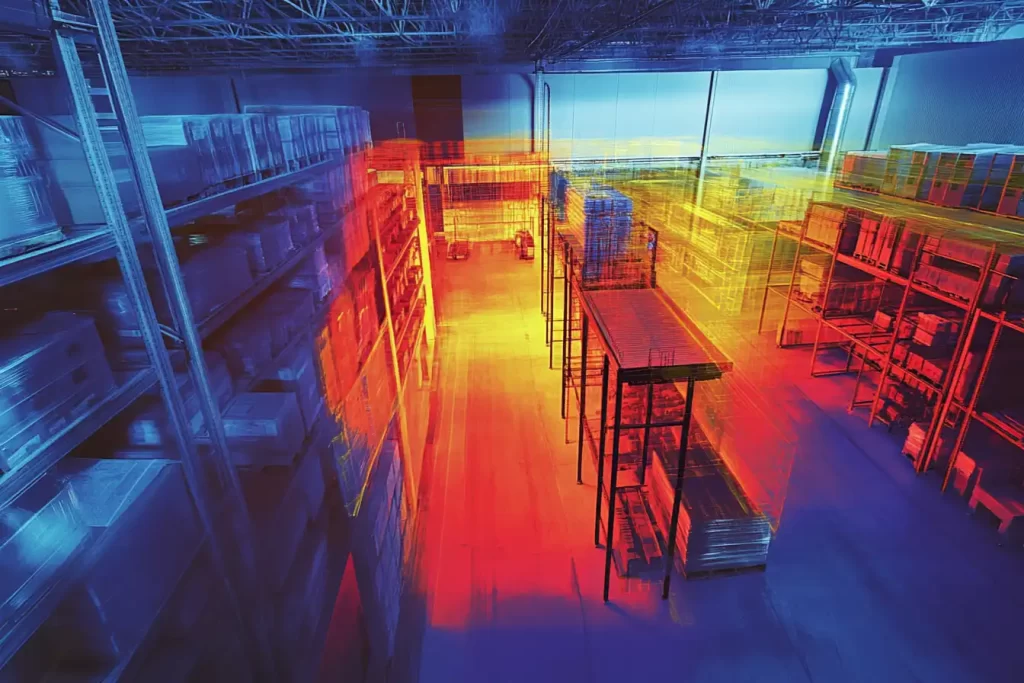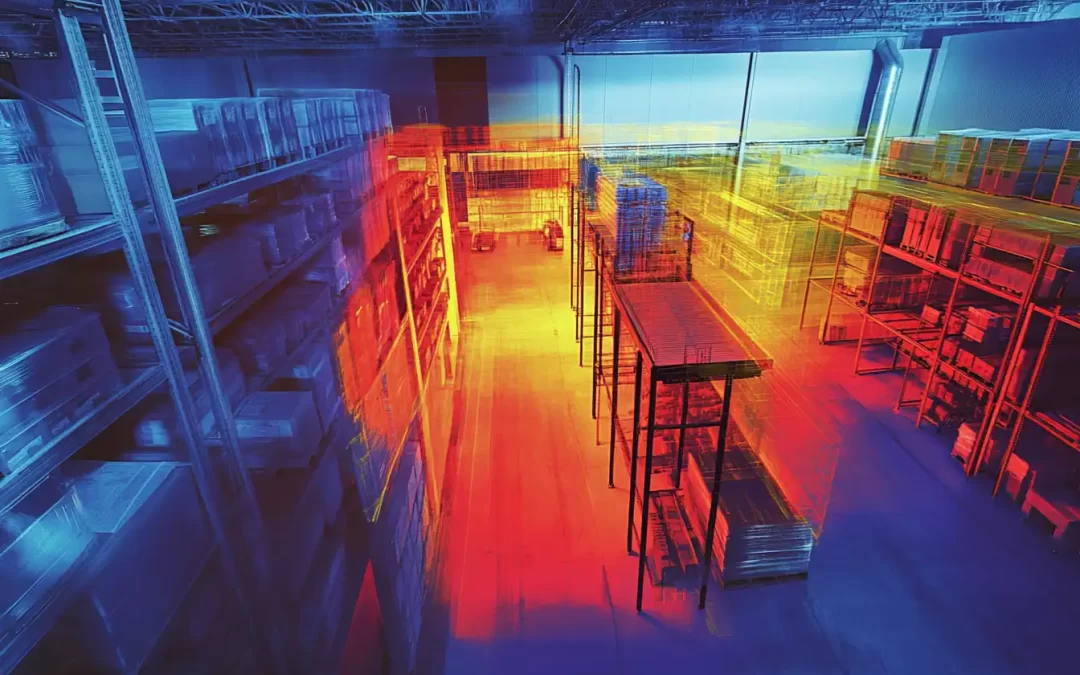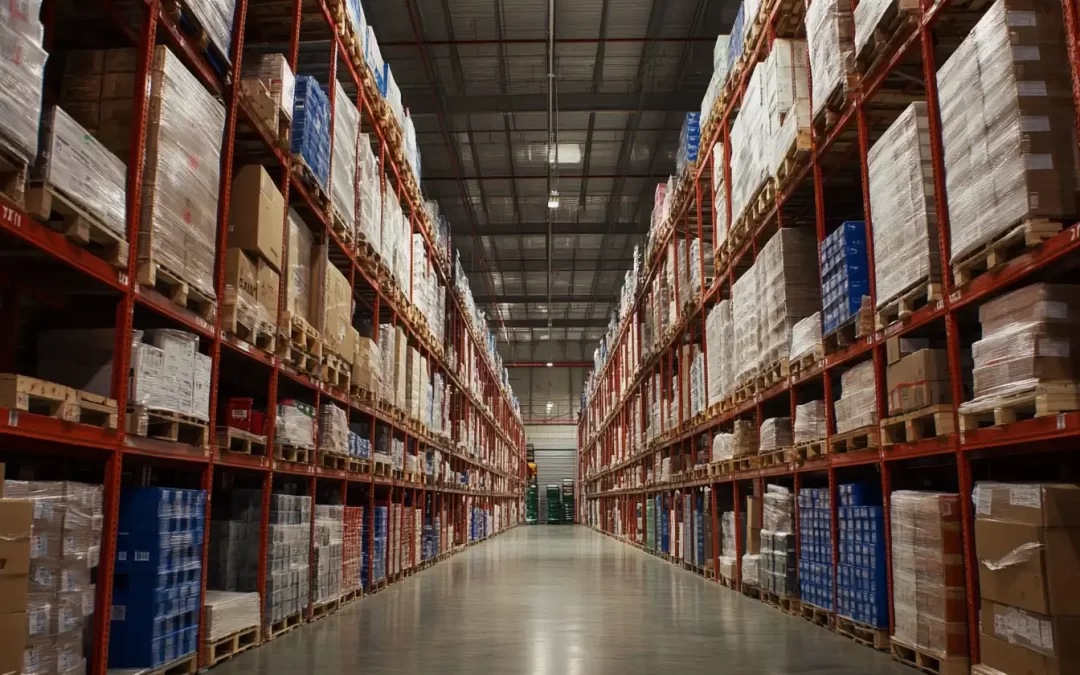How to Control Temperature Fluctuations in Large Warehouses
Maintaining consistent temperatures in large warehouses is a constant challenge. High ceilings, open dock doors, and inconsistent zoning often lead to hot and cold spots that affect comfort, product quality, and energy efficiency. If you’re struggling with uneven airflow or seasonal temperature swings, it’s time to take a closer look at your warehouse temperature control strategy.
From destratification fans to smart zoning and insulation upgrades, here’s how facility managers can get control of warehouse climate—without breaking the budget.
Need emergency help due to system failure? Choice Mechanical offers 24/7 commercial HVAC emergency services for warehouses across Indianapolis and Central Indiana.
1. Address Temperature Stratification with Destratification Fans
In high-bay warehouses, warm air rises and collects near the ceiling while cooler air settles near the floor. This creates uneven temperature zones, forces HVAC systems to overwork, and wastes energy trying to condition unusable air space.
- Install high-volume, low-speed (HVLS) fans to circulate air vertically
- Use destratification fans to mix air layers and balance temperature
- Reduce the need for excessive heating or cooling cycles
Destratification improves comfort for workers and prevents HVAC systems from short-cycling due to inaccurate thermostat readings.
Ask us about airflow balancing solutions for your facility.
2. Implement Smart Zoning for Targeted Control
Not all areas in a warehouse need the same level of conditioning. Loading docks, office zones, and product storage areas often have vastly different usage patterns. Without zoning, you risk over-conditioning low-traffic areas and under-conditioning occupied spaces.
- Segment your HVAC system into functional zones
- Use programmable thermostats or building management systems (BMS)
- Optimize airflow based on activity, time of day, and layout
If you’re still running a single-zone setup across a 50,000+ square-foot facility, it may be time to ask your HVAC contractor the right questions.
Let us help you design a smart zoning plan tailored to your space.
3. Insulation and Building Envelope Strategy
Your building’s structure plays a huge role in temperature consistency. Gaps in insulation, cracked dock seals, or poorly insulated overhead doors allow conditioned air to escape—leading to wide temperature swings and overworked equipment.
- Inspect dock seals, windows, and door thresholds for leaks
- Upgrade insulation in walls and roof areas prone to loss
- Use insulated curtain walls to segment large areas when needed
Even minor building envelope improvements can have a big impact on HVAC load and long-term cost savings.
We can evaluate your warehouse layout for energy loss and inefficiencies.
4. Maintain Equipment to Avoid Performance Drops
Dirty filters, failing dampers, or broken thermostats can all lead to inconsistent airflow and temperature swings. Regular inspections and maintenance are essential for optimal system performance—especially in demanding warehouse environments.
- Change filters regularly and inspect dampers for blockages
- Calibrate thermostats and zone controls each season
- Clean coils and check refrigerant levels to maximize efficiency
Skipped maintenance is a major cause of hidden energy waste and inconsistent performance.
Ask us about a preventative maintenance plan designed for warehouses.
5. Know When Temperature Fluctuations Signal Bigger Problems
If your facility’s temperatures are wildly inconsistent despite zoning and maintenance, the problem may be system failure. Aging equipment, failed sensors, or overloaded units can lead to breakdowns that affect employee safety and inventory stability.
- Increased hot/cold complaints from staff
- Rising utility costs despite usage consistency
- System running constantly but not holding set points
HVAC downtime in warehouses isn’t just inconvenient—it can be a major operational risk. When breakdowns happen, fast response is critical.
Choice Mechanical offers 24/7 emergency HVAC support when system failure causes serious comfort or compliance issues.
Frequently Asked Questions
Why are temperature fluctuations more common in warehouses?
Warehouses have high ceilings, large open spaces, frequent door openings, and inconsistent insulation—all of which contribute to uneven airflow and temperature layers.
Do I need to zone my warehouse HVAC system?
Yes. Zoning helps manage temperature by use-case area, which is critical in mixed-use warehouses that include offices, storage, and shipping zones.
How can destratification fans help?
They circulate warm air from the ceiling down to occupant level, eliminating temperature stratification and reducing the heating load.
Can Choice Mechanical evaluate my HVAC system?
Yes. We offer full HVAC-R evaluations and airflow audits tailored to large commercial and industrial facilities.
Conclusion: Control the Climate, Control the Costs
Warehouse temperature control isn’t just about comfort—it affects safety, productivity, equipment lifespan, and energy spend. If you’re seeing extreme swings or persistent hot/cold zones, it’s time to assess airflow, zoning, and system performance.
Need fast help with an HVAC emergency? We’re available 24/7 for warehouse clients across Indianapolis and Central Indiana.
Let’s talk about long-term solutions for consistent warehouse climate control.




